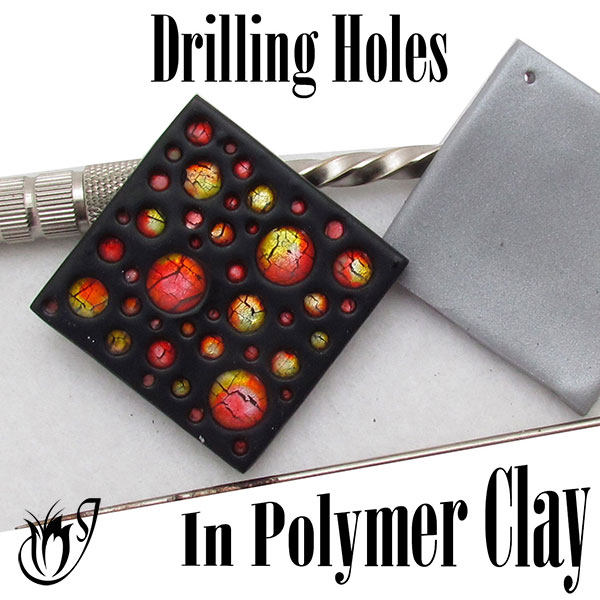Crackled Skinner Blend Polymer Clay Watercolor Tutorial
In this tutorial I'll be showing you how to create a Crackled Skinner Blend Polymer Clay Watercolor Veneer. This is a cool variation on the polymer clay torn paper technique developed by Maggie Maggio.
I've been playing around with this technique a lot, and it's really fun. There are so many different things you can do with it once you get started. Try this tutorial out, and then see what you can come up with.
In order to complete this tutorial you will need a three part Skinner Blend. The link to the Skinner Blend tutorial can be found in the suggested links box below the video.
You will need the following supplies:
- Black and white polymer clay (I’m using Premo)
- Translucent polymer clay (I’m using Premo)
- A Skinner Blend (I’m
using a three part skinner blend made from Premo Bronze, Gold and 18k Gold.)
- A tissue blade
- A pasta machine
- An acrylic roller
-
Americana black paint
(Any paint that crackles will work)
- A texture sheet of
your choice (I’m using Lisa Pavelka’s Ancient Doodles)
- Spray bottle filled with water.
How to Make a Crackled Skinner Blend Polymer Clay Watercolor Veneer Step by Step
- To start with you’ll need a sheet of black and white polymer clay, conditioned and rolled out on the thickest setting of your pasta machine.
- Stack the two colors and run through the thickest setting again.
-
Next, you'll need a three part Skinner Blend. (I'm using a blend of Premo Bronze, Gold and 18k Gold.)
See my Three Part Skinner Blend Tutorial for instructions.
- Take your Skinner Blend down to the middle setting on your pasta machine. Lengthen it, don’t widen it.
- Place it on top of the white side of your black and white stack. Trim away any excess.
- Now bring over a texture stamp of your choice. I’m using Lisa Pavelka’s Ancient Doodles stamp.
- Lay your texture stamp on your work surface and give it a good spray with your water bottle.
- Lay the stack of clay, with the Skinner Blend facing down, over the stamp.
- Spray the top of the clay, which should be the black side, with water.
- Press the clay into the stamp using your fingertips, working from one side of the stamp to the other to expel any air bubbles.
- Give one good roll over with your acrylic roller.
- Lift the clay gently out of the stamp.
- Dry off the clay and work area.
- Take your black paint and gently rub it over the raised areas of the pattern with your fingertips.
- While the paint dries, prepare a sheet of translucent polymer clay. It needs to be rolled out on the thinnest setting of your pasta machine.
- Once your paint is dry, flatten the pattern out using your roller, so that the paint crackles.
- Place the translucent sheet over the top of your painted sheet. Trim away the excess translucent.
- Take the sheet down to the third thinnest setting on your pasta machine, rotating the clay at each setting to prevent distortion of the pattern.
- Rip the sheet into pieces. You can vary the effect you achieve by changing the sizes of the pieces you tear off.
- Place the pieces together in an overlapping scale-like fashion. Make sure to do it at random.
- Flatten the polymer clay watercolor sheet out using your fingertips, against the grain of the scales. Then roll over with your acrylic rod. See the video for the correct procedure.
- Run through the pasta machine at progressive settings until the third thinnest setting.
In the video I show what the finished, baked veneer looks like, as well as some other watercolor examples I have been playing around with, so do take a look at that.
Suggested links
- How to Make a Three Part Skinner Blend
- How to Prevent Pasta Machine Ripples at Thinnest Settings
- More Watercolor Techniques
- Translucent Silver Leaf Mokume Gane Tutorial
If I have missed something, or you still have questions, please leave a comment below.
You can like my Facebook page or join the Jessama Tutorials Polymer Clay Community on Facebook to stay up to date with more polymer clay tutorials like this one as they are released.
















Please leave your comments below: